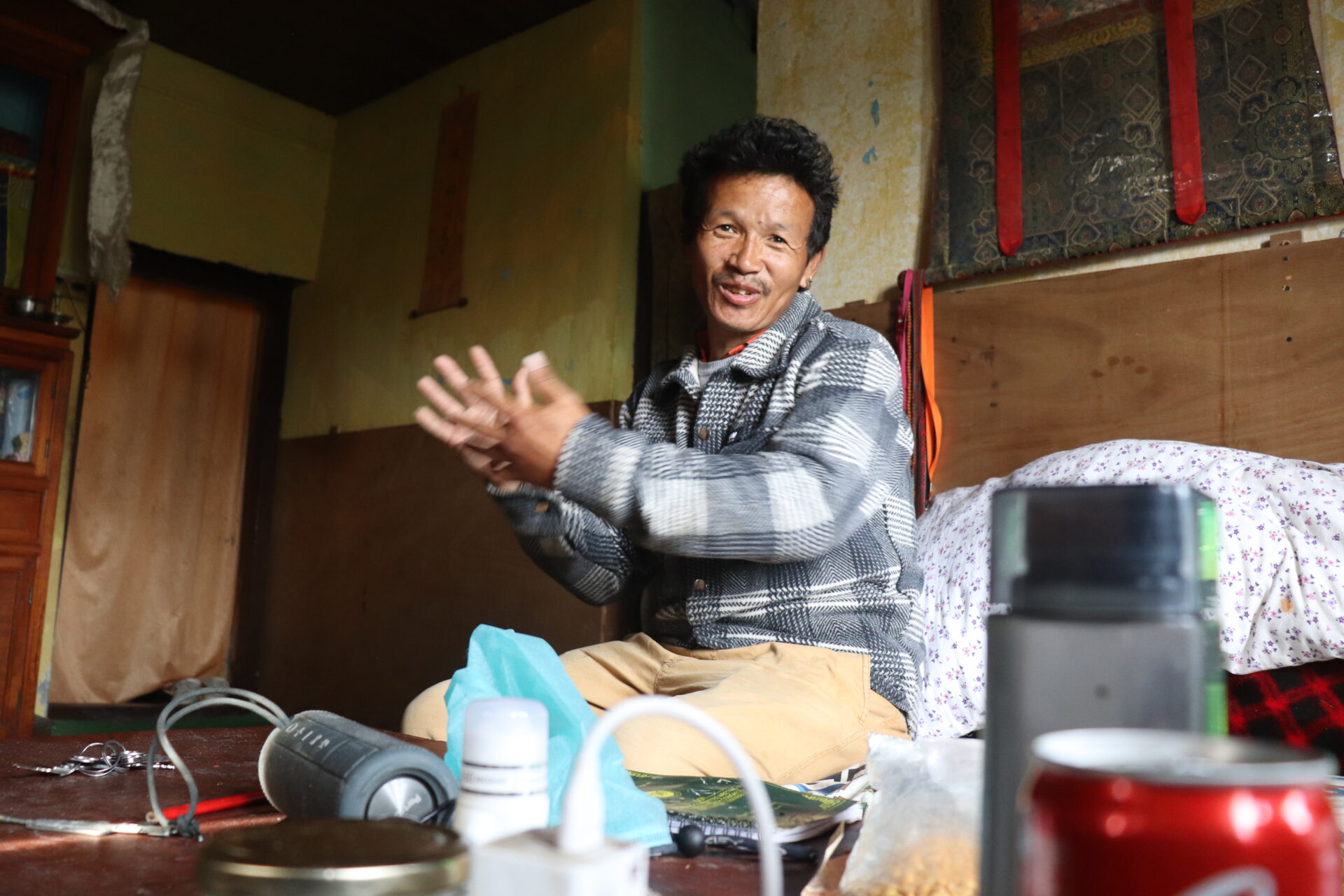From Tibet to Bir: A Journey of Freedom, Family, and Tradition

Sonam Rangzen Gyatso, known as “Freedom” in his village, left Tibet at the age of nine to pursue education and a safer life in India. Decades later, he has built a life in Bir Tibetan Society, raising a family, practising traditional crafts, and keeping Tibetan culture alive through music and community events. His story reflects the resilience, creativity, and enduring spirit of Tibetans in exile.
46-year-old Sonam Rangzen Gyatso is known as “Freedom” in his village, because his middle name, Rangzen, means freedom in Tibetan. But freedom comes at a cost. The peace and economic opportunity he gained after coming to India as a nine-year-old were paid for by leaving his family and home behind in Tibet.
In 1979, as life became increasingly difficult in Tibet, India was seen as a place of hope. Many Tibetan families sought to send at least some of their children to the neighbouring country for better education and religious freedom under the guidance of His Holiness the Dalai Lama.
Being only nine, Sonam was chosen by his mother to travel to India, assisted by a relative and local guides, through a treacherous journey on foot, horseback, and in vehicles. The route passed through Ladakh, rivers, and villages, testing even the strongest adults. “We travelled on horseback, drank water from the road, and struggled through various obstacles,” he recalls.
Captured at the Border
Sonam remembers, “My relative hid me inside a thick blanket to avoid detection as we neared the Indian border.” However, they were caught by the Indian Army and detained for a month while undergoing further checks. “I was very young at the time and had little understanding of what was happening,” he says, describing how security personnel closely monitored them.
Life in India
Once in India as a Tibetan refugee, Sonam joined Tibetan Children’s Village (TCV), studying up to the eighth grade. Recognising the importance of education for Tibet’s future, TCV had been established in 1960 with just 51 children and has grown into a large community over the decades.
“I wanted to learn practical skills, so I trained in carpentry and traditional Tibetan crafts. At one point, I even considered joining the army, learning weapon handling in Mussoorie. I also trained in trades such as electrical work and plumbing, and even made a Tibetan-style guitar,” says Sonam.
Years later, he settled and married in Bir Tibetan Society, founded in December 1996 with support from IM Swedish Development Partner. A skilled craftsman, Sonam has worked in monasteries and local businesses as a carpenter, plumber, and electrician. Today, he lives in Bir with his wife, in-laws, and two children.
Reuniting with His Mother
When Sonam turned 18, he received a call asking him to come to Siliguri, India, as his mother was travelling from Tibet to meet him. “I didn’t even have her photograph. When I reached the town hall, I asked at the enquiry desk about my mother, and realised only then that the woman sitting nearby was her. We hadn’t seen each other for ten years – it was an emotional moment,” he recalls.
His mother had come to attend a religious teaching and returned to Tibet shortly afterwards. Due to difficulties in contacting family directly from India, Sonam explains that he would travel to Nepal to communicate with Tibet. “We crossed the border on foot from India to Nepal. Speaking Nepali fluently and blending in made it easier – it was almost a funny story in hindsight,” he says.
Music and Cultural Leadership
In later years, Sonam found joy in music and event organisation. A proud member of the Youth Congress at Bir Tibetan Society, he helps organise Tibetan cultural festivals, performing in traditional attire and keeping songs and dances alive among the younger generation. “I’ve recently bought a DJ mixer. People love remixes, so I remix old and new Tibetan songs. It gives energy to our events,” he says.
Every year, “Freedom” participates in cultural shows, ensuring Tibetan traditions continue to thrive for future generations.
Text and photo: Maria Kempe
By: Malin Kihlström